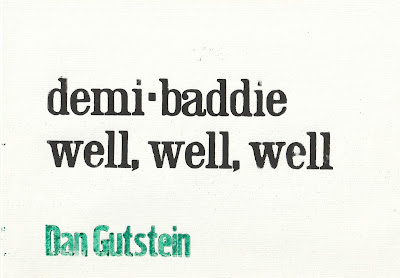After publishing my 2023 book, Poor Gal, which chronicles the “Liza Jane” family of songs, I tumbled into a
little state of blueness. All the research and writing had fallen away and,
with nothing immediate to replace those efforts, I began to mope, I began to
worse than mope, I felt that “dropping action” behind the sternum. To make
matters worse, I had tripped on an uneven sidewalk during a jog, pinwheeled
forward into a terrific clattering and cursing wipeout, and, according to
one estimate, inflicted either grade-2 or grade-3 tears on five or six muscles
in the left hip region, not to mention some spectacular cuts and bruises. Thus,
I repaired to my lair in quite a not-so-fine fettle. Let me tell you: when you
are hurt that badly, little things like leaving your water bottle in the other
room really suck, because it takes time to straighten that s***
out.
While walking was rough, I still did it, one
foot at a time, I walked in the glens, I walked in the glades, I walked in the
pines (!), I espied my friend the she-fox. I stretched, I walked, eventually I
jogged a bit, and eventually I jogged a lot. Simultaneously, I remembered a
song, I recalled “In the Pines,” a song I had studied alongside “Liza Jane.”
Its origins story (found at Wikipedia, etc.) always nagged at me, like
something was “off,” considerably off. “I know a thing or two about
folksong origins,” I would start to tell myself. “Hmmm,” I would start to tell
myself. Maybe I could explore and I maybe I could jot a few things down, la dee
dah, no big deal. When, one day, I asked myself, am I really thinking what I
think I’m thinking? Well, yes I am. I began a deep dive. To outline, annotate.
All those things I once did for my first true love, Liza Jane, I was then doing
for a different woman, one who shivered in the woods.
would influence the formation of “In the Pines.”
In short, after much
introspection and considering what I really wanted in a relationship, I thought
it was time for me to start seeing some other songs.
By now, Dear Reader, I am already
halfway through my new book about “In the Pines.” When complete, the book will
completely alter the origins story for the song, including who devised it, when
it came together, and where this all took place. I have unearthed new evidence
that will offer insights on what the original musicians may have intended the song
to mean. Of course, I will get to Lead Belly, Nirvana, and all that jazz. The
writing is going well. I feel refreshed with purpose. The blueness of not
having a folk song to write about has been vanquished. And I haven’t tripped on
a sidewalk in quite a while. My hips are splendid. You should see my Asian
squat!
Having just returned from New Orleans where I
co-produced The Liza Jane Sessions for a forthcoming documentary film about “Lil Liza Jane,” I post this update with a lot of
joy. But I also intend this as a call-out to musicians, writers, editors,
presses, creators of any kind who may have a special connection to “In the
Pines.” I would like to hear from you. Drop me a line. Get in touch. Let’s talk
some “In the Pines.” Let’s talk some folk blues. Let’s talk some “Lonesome
Road.” Let’s talk the year 1915. Let’s talk about turpentine, yes, turpentine. Ah,
I could keep on going, but mum’s a good word for now. Yes, mum will do just
fine, in the pines, where the sun never shines. Forthcoming, my friends,
forthcoming.
Discography
Dock Walsh. “In the Pines” A-side
b/w “Going Back to Jericho” B-side. Columbia 15094-D (1926). Atlanta, GA. Dock
Walsh (banjo and vocals.)
Photograph of Mississippi Fred McDowell
(public domain.)

























